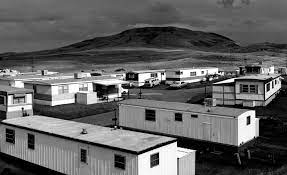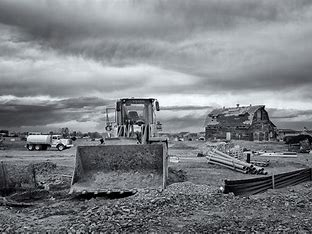Topographic photography is the idea of taking landscape style photos which show the infiltration of human life through the photo. Usually these photographs are taken in urban, rural or suburban areas, so the inclusion of landscapes are viewed.
The New Topographic idea, was a reaction to the infiltration of humans and made-made structures throughout the urban and suburban areas. The early topography photographers believed that as long as humans continue to intervein upon nature and the natural world, topography will remain a important part of showing the cause this will have on nature.

This photograph by Robert Adams in particular shows the contrast between the life and the landscape of the natural world quite harshly. The way the photo is almost split in half shows the difference between the natural unfiltered world with the habited rural world.
The way the clouds above the dark mountain are looming shows almost the unforgivable nature of the natural world while the sun gleams on the caravans below – it definitely shows contrast but also shows beauty between the mix of topics.
The blend between the two themes in this photo show almost a harmony between the two ‘worlds’. While still showing the nature and beauty of the mountain range landscape, Adams manages to reveal the impact that colonisation has on more rural places throughout the world.

The idea of ‘New Topographics’ signalled the emergence of a new photographic approach of landscape. It shows the beauty and controversy of man-altered landscapes that were taken over by buildings and factories. There were 10 main photographers that founded the idea of ‘New Topographics’ them being – Robert Adams, Lewis Baltz, Bernd and Hilla Becher, Joe Deal, Frank Gohlke, Nicholas Nixon, John Schott, Stephen Shore and Henry Wessel.
